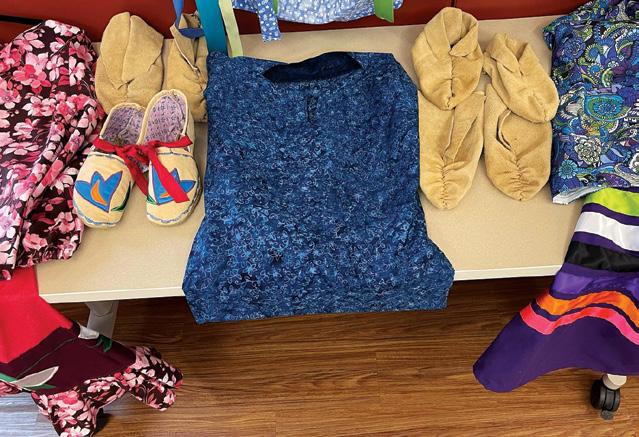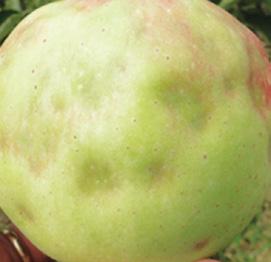
6 minute read
step with eDucation STep with eDucation
Saturday, August 12
10:00 a.m. - 12:30 p.m. at PHS
The Department of Education and Pokagon Health Services invite you to A Healthy Step with Education.
Please call the Elder’s Specialist at (269) 7820765 if you are not an Elder and
PHS Wellness is hosting a Minor Mudder following A Healthy Step at 1:00 p.m.
This day features health education, screenings, PreK–12 program registration, and activities. A Healthy Step with Education is for the whole family, infants to elders. It is open to all tribal citizens, employees, and their families.
We can’t wait to see you!
Questions? Contact Elizabeth Leffler at (269) 462-4406 or Susan Doyle at (269) 782-0887.
Go easy on the following:
Meal Planning and Shopping for Heart Health
Following a healthy meal plan is an important— and enjoyable—step to help lower your risk for heart disease. Get started with the ideas and tips below.
Plan your meals around these foods:
• A wide variety of colorful fruits and vegetables
• Whole grains—aim for at least 3 servings a day
• Fat-free and low-fat dairy foods
• Skinless poultry and fish (Enjoy fish at least 2 times a week, especially types that are high in beneficial omega-3 fatty acids. Salmon, Atlantic or Pacific mackerel, lake trout, tuna, herring, and sardines are among the highest.)
• Beans (such as kidney beans, black beans, and chickpeas), lentils, and split peas
• Nuts and seeds
• Vegetable oils
• Saturated fat in foods like fatty meats, poultry skin, full-fat dairy foods, and tropical oils, such as coconut and palm oils
• Trans fat in stick margarine, vegetable shortening, and prepared foods, such as cakes, cookies, crackers, snack foods, and commercially fried foods
• Sodium in table salt and in packaged and prepared foods, such as canned soups, lunch meats, and frozen dinners
• Added sugars in sweets (such as candy, cakes, and pies) and sugar- sweetened beverages
Heart healthy grocery shopping and meal prep:
• Use the Nutrition Facts label to compare the nutrients in a serving of similar foods. Choose foods with more dietary fiber and less saturated fat, sodium, and added sugars. Also choose foods labeled “0 grams trans-fat” and without partially hydrogenated oils in the ingredient list.
• Load up on fruits and vegetables—fresh, frozen, canned, jarred, and dried are all fine. Look for plain frozen vegetables, “reduced sodium” or “no added salt” canned vegetables, canned and jarred fruits that are unsweetened or packed in their own juice, and dried fruits without added sugars.

• Choose whole-grain types of bread, cereal, rice, and pasta. Examples are 100% whole-wheat bread, oatmeal, shredded wheat, brown rice, and wholewheat spaghetti. Or try an “ancient” grain like quinoa, buckwheat, or millet as a side dish.
• Select low-fat and fat-free milk, yogurt, and cheese. Compare added sugar levels in yogurt and yogurt drinks and choose those with less added sugars.
• Choose lean meats (look for cuts with “loin” or “round” in the name) and trim off visible fat before cooking. Choose skinless poultry or remove the skin before or after cooking. Bake, broil, roast, grill, or steam instead of frying.
• Try a plant-based protein, such as tofu, tempeh, veggie burgers, and veggie crumbles.
• Pick fish that’s fresh, frozen, canned, or in pouches.
• Buy dry or canned beans, peas, and lentils. Look for reduced-sodium canned beans or rinse regular beans under cold water to reduce sodium.
• Add flavor to foods with herbs, spices, and flavored vinegars instead of salt. Choose low-sodium beef, chicken, and vegetable broth.
• For cooking and baking, choose a liquid vegetable oil like olive, canola, corn, cottonseed safflower, soybean, or sunflower oil. Avocado, peanut, and sesame oils are good choices as well.
• For spreads, buy soft tub, liquid, or spray margarines without trans fats rather than butter or stick margarine.
• Choose nutritious snacks, such as unsalted nuts and seeds, hummus with baby carrots, and fruit. Limit less nutritious options like chips, cookies, cakes, and candy.
For heart healthy recipes, meal planning ideas, and shopping tips, visit the Academy of Nutrition and Dietetics website at www.eatright.org and the American Heart Association website at www.heart.org.
Do you have a skill to share?
If you are a pow wow dancer, singer, firekeeper, or storyteller, or if you are skilled in traditional art or craft and would like to have the opportunity to work with your tribal community to share your knowledge, please scan the QR code to complete the form online.
You may also call Center of History & Culture at (269) 7833513. You will work with CHC to earn an honorarium by sharing with your community. All registrants are required to complete the sex offender registry check online.
Did You Know You Can Save 3 Lives in Just 15 Minutes?
HOW MANY LIVES WILL YOU SAVE IN 2023?
Successful donors will get to choose a small gift for donating!
Sign up for one or all of Pokagon Health’s Blood Drives. Thursdays from 9:30 a.m. - 2:30 p.m. May 25 | July 20 | Sep. 14 | Nov. 16 donate.michigan.versiti.org or contact Elizabeth Leffler at (269) 462- 4406 or Elizabeth.Leffler@ PokagonBand-nsn.gov.
Kë Mizhatthwen | Let’s Make Regalia
The timing was perfect. Attendees at Kë Mizhatthwen class really came through for neshnabé mizhatthwén (lending) closet in time for the Mnokmé pow wow.


The next Kë Mizhatthwen class is Sunday, May 7 from noon – 5 p.m. at Center of History & Culture. Please email Amy Morseau to register. AmyJo.Morseau@PokagonBand-nsn.gov.
Pride at the Tribe!
On the last Thursday of every month from 5 – 6:30 p.m., LGBTQIA2s+ kids between 13 – 17 years old are encouraged to join their peers at Behavioral Health for some social and support time.

While kids gather in their own group led by a behavioral health counselor, parents and caretakers have the opportunity to participate in a separate counselor led parents group to ask questions and seek support if they choose.
Often times, for parents or caregivers of LGBTQIA2s+ kids, understanding the process of how to best love and support their child can be overwhelming without the right community and tools. The behavioral health specialists are there to offer support.
If you would like more information about Pride at the Tribe please call Behavioral Health department at (269) 783-2476 or email Stacy Young at Stacy.Young@PokagonBand-nsn.gov.
If you’re a teen, or you know a teen between 14-17 years old who is looking to make connections with kids of the same age, consider joining this group. Much of the group time is spent immersed in Coyote and Crow. Coyote and Crow is a role playing game (RPG) that takes place in a future science fiction setting where the Americas were never colonized by Europeans, and the societies being explored are all extrapolated from Indigenous cultures.

“The kids love it,” expressed Stacy Young, Behavioral Health Counselor and group facilitator. “Kids create their own characters and make choices and decisions that may or may not work. RPGs provide a safe place for kids to explore, succeed, and sometimes fail. The game provides a foundation for some great peer-to-peer conversations.”
If you would like more information or are interested in the Teen Skills Group, please call the Behavioral Health department at (269) 783-2476 or email Stacy Young at Stacy.Young@PokagonBand-nsn.gov.
What’s that Non-Native Species? Brown Marmorated Stink Bug (Halyomorpha halys)

You have probably seen these bugs inside your workplace or home recently, as they are coming out of hiding after overwintering in buildings. The brown marmorated stink bug (Halyomorpha halys; BMSB) population is rapidly growing in many areas of the United States. The BMSB is an invasive species from Eastern Asia which was first noticed in the US in 1998 but was likely in the country prior to their initial identification.
The BMSB can be distinguished from native stink bugs because it has white bands on the antennae, alternating black and white bands around the edges of the shield shaped body with inward pointing white triangles, white bands on the legs, and rounded shoulders as opposed to spiny shoulders on some native species. The BMSB is considered an agricultural pest which feeds on agricultural crops, including corn and tomatoes, and orchard fruits, including apples, peaches, and pears.

The stink bug will stick its straw-like mouthpart through the skin of agricultural fruits and eat from the fruit, causing dimples on the outside of the fruit and brown spots on the inside of the fruit. These insects can trigger allergic reactions in individuals that are sensitive to the bugs’ odor or if a crushed bug touches human skin. These invasive species outcompete native stink bug species and displace them in the environment, causing ecosystem changes and altering food webs.












